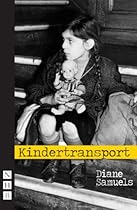

An uncensored Hollywood tell-all filled with explicit tales of love; sex; and revenge from the video vixen made famous by Warrantrsquo;s rock anthem ldquo;Cherry Pie.rdquo;Who could forget the sexy ldquo;Cherry Pierdquo; girl from hair metal band Warrantrsquo;s infamous music video? Bobbie Brown became a bona fide vixen for her playful role as the object of lead singer Jani Lanersquo;s desires. But the wide-eyed Louisiana beauty queenrsquo;s own dreams of making it big in Los Angeles were about to be derailed by her rock-and-roll lifestyle. After her tumultuous marriage to Jani imploded; and her engagement to fast-living Mouml;tley Cruuml;e drummer Tommy Lee ended in a drug hazemdash;followed by his marriage later to Pamela Andersonmdash;Bobbie decided it was time Hollywoodrsquo;s hottest bachelors got a taste of their own medicine. Step one: get high. Step two: get even. In a captivating; completely uncensored confessional; Bobbie explicitly recounts a life among some of the most famous men in Hollywood: Leonardo DiCaprio; Kevin Costner; Mark McGrath; Dave Navarro; Sebastian Bach; Ashley Hamilton; Rob Pilatus of Milli Vanilli; Matthew and Gunnar Nelson; Orgyrsquo;s Jay Gordon; and many more. No man was off limits as the fun-loving bombshell spiraled into excess; anger; and addiction. Bobbie survived the partymdash;barelymdash;and her riveting; cautionary comeback tale is filled with the wildest stories of sex; drugs; and rock and roll ever told.
#1128452 in eBooks 2013-04-11 2013-04-11File Name: B00BSBO286
Review
4 of 4 people found the following review helpful. Virtuosity and ArtistryBy E. N. AndersonAnya Peterson Royce was a professional ballerina before becoming an anthropologist. This book is a personal record: thoughts on ballet expand out to experiences with other dance forms; ranging from Kabuki to the dances of the Tewa Pueblos of New Mexico. Then she moves on to classical music and to traditional small-scale cultures healing rituals; in such cultures; healing is a performance art; since the main thing the curer can really accomplish is psychological support and help posed in dramatic forms. Where this book stands out is in contrasting virtuosity--sheer technical skill--with true artistry. Royce has given a great deal of thought and attention to the question of what differentiates a great performance from a merely good one (or; worse; a merely slick one). A good dance performance can be perfect in timing; flow; steps; poses; and so on; a music performance can be perfect in timing; pitch; attack; dynamics and so on. A great one is never perfect--not in that way. A great artist adds countless tiny; almost imperceptible variations to bring out the emotional force of the piece. A musician will come in a tiny fraction of a second early on an attack note; and make up for it by coming in a tiny bit late on a later note ("rubato and agogic"). Similar tiny variations will appear in force of attack; tone quality; pitch levels changes; dynamic contours; and all other variables. These changes are not just random; they are all carefully calculated; or more often intuited; to drive the emotion and intensity of the piece. This is what differentiates a merely pleasant performance from a performance that sounds; superficially; the same; but leaves the audience collapsed in their chairs; drenched in sweat and tears. The great artist can then go on and build original creations on the understanding of emotions that emerges from such performance success. This use of micro-variations seems to be worldwide. The Chinese have about 100 different named ways of playing a single note on the qin (Chinese elite stringed instrument). Blues guitarists have a complex vocabulary for such variations. Effective use of them in the service of really intense emotion is what differentiates Robert Johnson from an ordinary bluesman. Royce plays cello and uses it as one example; I remember once hearing Mischa Schneider coach a friend of mine who is a concert cellist. My friend was playing about as well as I thought possible; but Schneider played the same piece with just a little sharper attack; more rubato-agogic; and so on; and the difference was astounding. Royces description of working with the great cellist Janos Starker brings out all the things I heard; in much more detail and from much deeper knowledge. I am glad somebody has finally come out and said this in the anthropological literature. I have seen many pathetic and dismal attempts to define what makes art great (e.g. Robert Jourdain in his otherwise excellent book MUSIC; THE BRAIN; AND ECSTASY; see my .com review). Now; Royce has provided a good account of one vital key: the performance side of art. Now someone else has to tell us how humanity got from "Twinkle; Twinkle; Little Star" to Beethovens symphonies. Some things this book is not: It is not a sustained; brilliant tour-de-force; it is more a set of personal essays. It is not an introduction to anthropology of performance art; Royce assumes the reader already knows that literature. She also assumes great knowledge of elite European dance and music. The book is; alas; also not well edited. Comma faults; missed quote marks; repetition (often word for word); and other problems are distractingly common. On the other hand; she gets a full extra star for not using; anywhere; such phrases as "inscribed on the body" or "problematizing gender" or "the modernist program;" even though she is treating in detail the actual phenomena in question. Such phrases once were valuable; because they referred to exciting new topics. They have long ago become vapid cliches; and should be dropped once and for all from the English language. Also; Royce is far too knowledgeable to think there is a thing; "the body;" that has some kind of separate reality that makes it (note that neuter gender) a special topic for study!